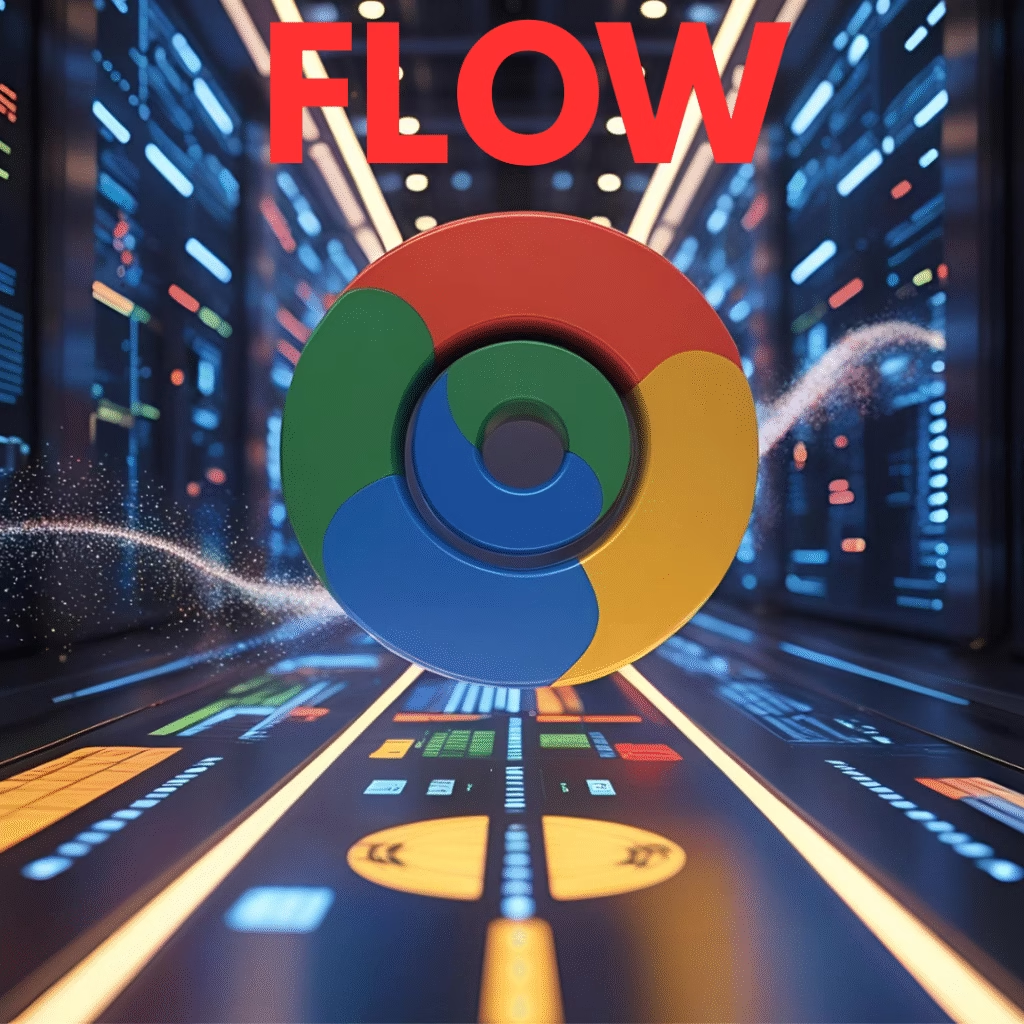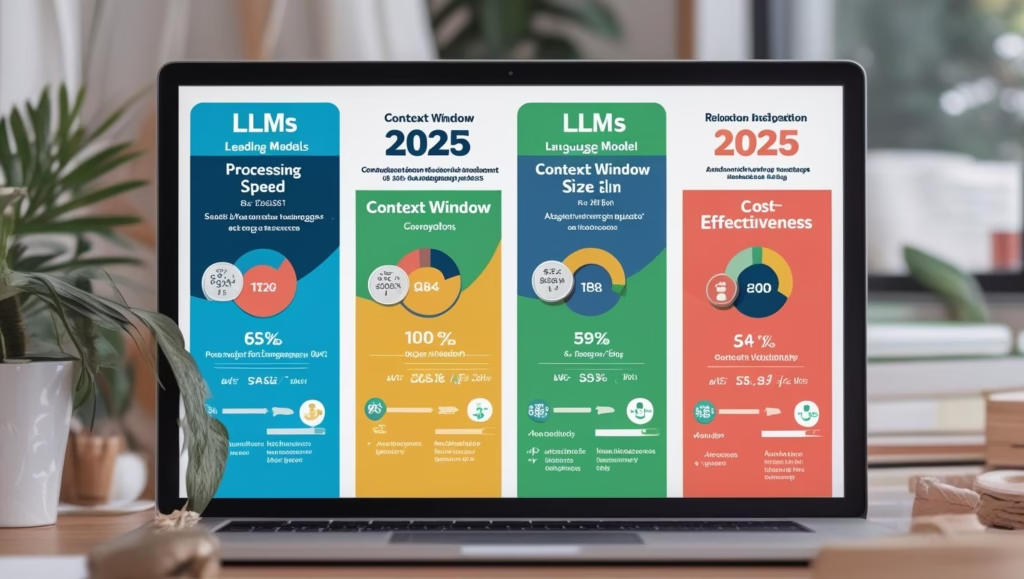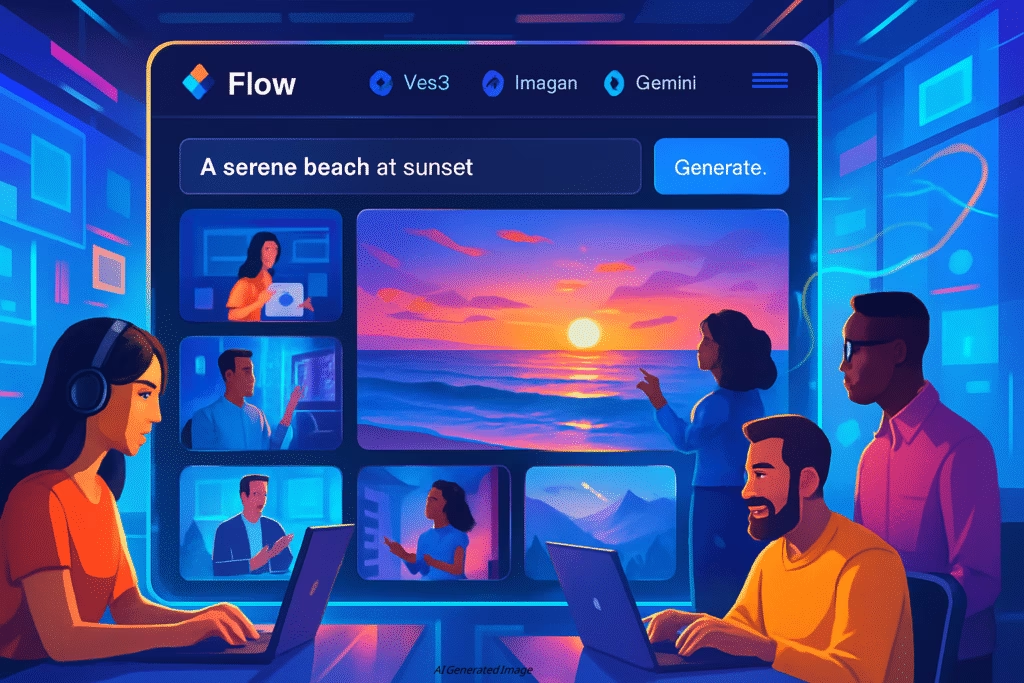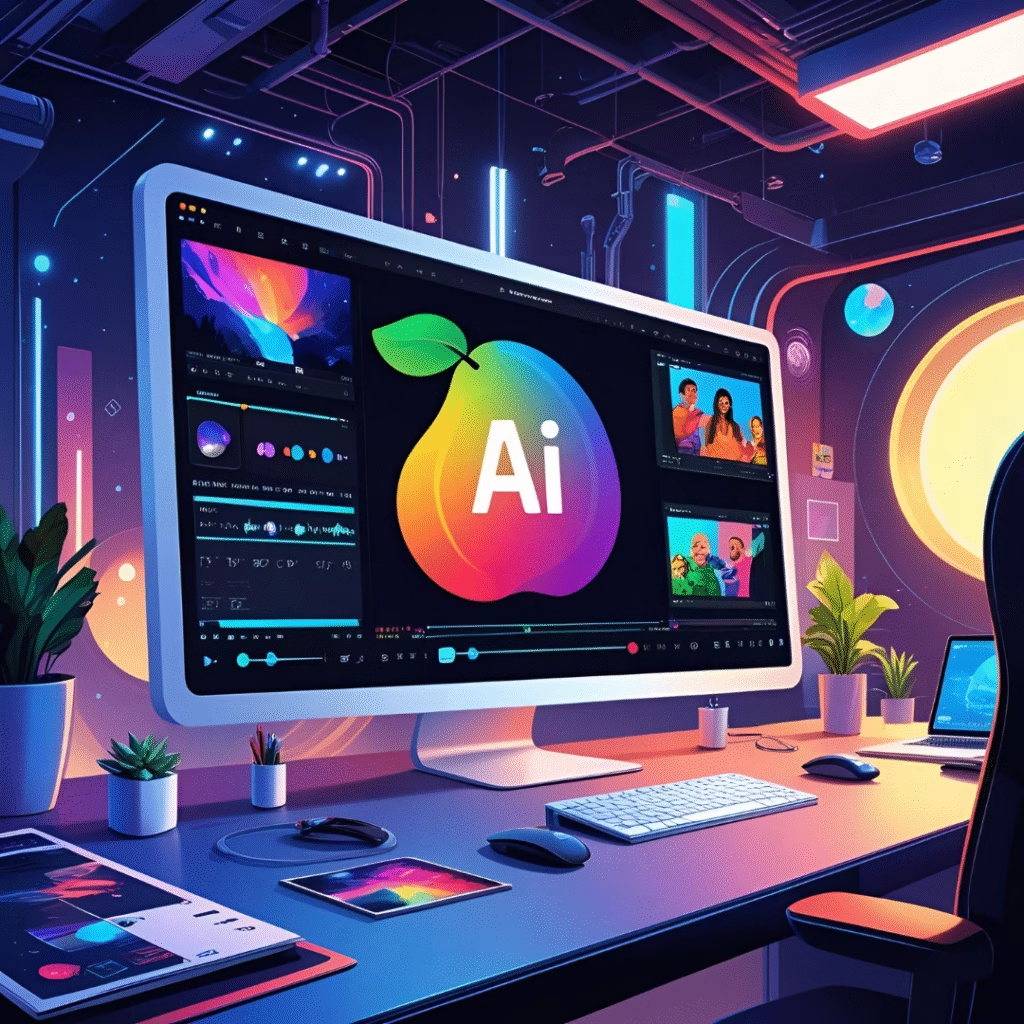Lights, Camera, AI Action: How Google Flow is Revolutionizing Filmmaking
Imagine having a virtual film studio that transforms your wildest ideas into cinematic scenes with a few keystrokes. That’s Google Flow the AI-powered filmmaking tool turning creators into directors overnight. Launched at Google I/O 2025, Flow isn’t just another video generator. It’s a creative collaborator, blending cutting-edge AI models like Veo 3, Imagen, and Gemini to democratize high-quality video production. Whether you’re a seasoned filmmaker or a TikTok newbie, Flow offers a playground for storytelling in 2025’s fast-evolving AI landscape.
What Makes Google Flow a Game-Changer?
Flow redefines AI video creation by combining precision and accessibility. Think of it as a Swiss Army knife for filmmakers:
Cinematic Quality Meets AI Simplicity
Flow generates 1080p video clips with realistic physics, lighting, and even lip-synced audio. Want a drone shot of a misty forest? Type it out, and Flow’s Veo 3 model handles the rest.
Filmmaker-Centric Tools
- Camera Controls: Adjust angles, zooms, and movements like a pro. Need a dramatic dolly zoom? Flow’s virtual cinematography tools make it intuitive.
- Scene Builder: Extend shots or insert transitions while maintaining visual consistency. No more disjointed jump cuts.
- Native Audio Generation: Add ambient sounds or character dialogue directly within the platform. The hum of a spaceship? Check. Footsteps on gravel? Done.
Modular Workflow
Start with a text prompt, upload a storyboard frame, or define specific “ingredients” like lighting and mood. Flow’s Gemini-powered interface understands natural language, so you can iterate ideas without learning complex jargon.
Asset Management
Organize prompts, characters, and scenes in a streamlined library. It’s like having a digital production assistant keeping your creative chaos in check.
Google Flow vs. The Competition: How It Stacks Up
Let’s break down how Flow compares to leading AI video tools in 2025:
| Feature | Google Flow | OpenAI Sora | Runway Gen-4 | Pika Labs |
|---|---|---|---|---|
| Video Quality | 1080p, cinematic realism | 720p-1080p, smooth motion | 720p, artistic styles | 720p, meme-friendly |
| Audio Sync | Native dialogue & sound | Basic background music | Third-party integrations | No audio generation |
| Ease of Use | Intuitive filmmaker UI | Technical prompt tweaking | Artist-focused tools | Beginner-friendly |
| Custom Scenes | Camera controls, consistency | Physics-aware sequences | Real-time rendering | Quick social clips |
| Pricing (Monthly) | $20 (Pro) / $249 (Ultra) | $15-$60 | $12-$76 | Free-$58 |
| Unique Edge | End-to-end studio tools | Long-form video support | Adobe integrations | Viral content speed |
Flow shines for professionals prioritizing cinematic quality and workflow integration, while Sora and Runway cater to niche needs like long-form content or real-time editing.
From Storyboards to Spotlight: Real-World Uses for Flow
1. Content Creation & Social Media
Craft Instagram Reels or YouTube intros in minutes. A bakery owner could generate a “behind-the-scenes” video of cookie decorating, complete with ASMR-worthy audio.
2. Marketing & Advertising
Prototype ad campaigns without costly shoots. Imagine a car commercial with sweeping mountain vistas all AI-generated, all editable in real time.
3. Education & Training
Teachers can build historical reenactments or science explainers. Flow’s consistency tools ensure Einstein looks the same in every scene.
4. Indie Filmmaking
Director Dave Clark used Flow to storyboard his upcoming short film, slashing pre-production time by 70%.
Addressing the Elephant in the Edit Suite
While Flow is groundbreaking, it’s not without limits:
- Availability: Only in the U.S. initially, with global rollout pending.
- Pricing: The $249 Ultra tier may deter hobbyists, though Pro offers 100 monthly generations.
- Ethical Safeguards: Flow blocks violent or misleading content and uses watermarking to flag AI-generated media.
Google also collaborates with filmmakers to refine Flow’s outputs, ensuring it complements rather than replaces human creativity.
Ready to Roll? How to Start with Google Flow
- Join the Waitlist: Access requires a Google AI Pro or Ultra subscription. Sign up via Google AI Studio.
- Explore Flow TV: Learn prompting tricks from curated clips and tutorials.
- Start Small: Try the “text-to-video” mode with simple prompts like “sunset over a cyberpunk city.”
- Mix Media: Upload your own images or use Imagen to generate custom “ingredients”.
For deeper learning, check Google’s official Flow documentation or this TechCrunch breakdown of its filmmaking potential.
The Future of Filmmaking Starts Here
Google Flow isn’t just a tool it’s a paradigm shift. By merging AI’s raw power with artistic intuition, it lets creators focus on what to say, not how to render it. Sure, it won’t replace Christopher Nolan tomorrow, but for small businesses, educators, and aspiring directors, Flow is a ticket to storytelling that once required Hollywood budgets.
So, what’s your first scene? A dystopian robot dance-off? A cozy café animation? Whatever it is, Flow’s waiting to collaborate. Ready to direct your AI-powered masterpiece?
Lights up. Camera rolls. Action.
Keywords: Google Flow, AI filmmaking, AI video creation, automated content generation, cinematic AI, Veo 3, Gemini AI, Imagen AI, AI video generator, AI storytelling tools, camera controls AI, scene builder, Flow TV, AI filmmaking tools, best AI video generator 2025, creative AI tools, Google AI Pro, Google AI Ultra, AI for filmmakers, video editing AI, generative video models
Disclaimer: Transparency is important to us! This blog post was generated with the help of an AI writing tool. Our team has carefully reviewed and fact-checked the content to ensure it meets our standards for accuracy and helpfulness. We believe in the power of AI to enhance content creation, but human oversight is essential.





